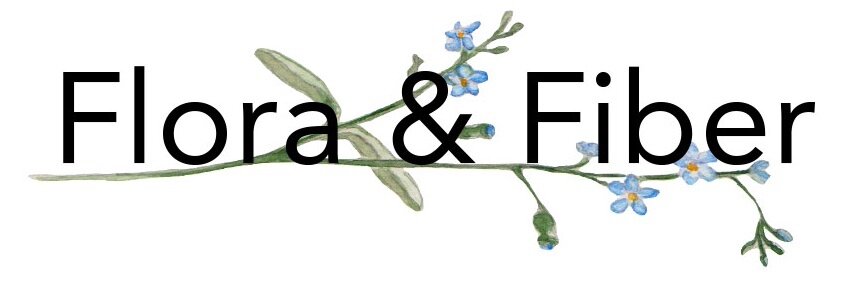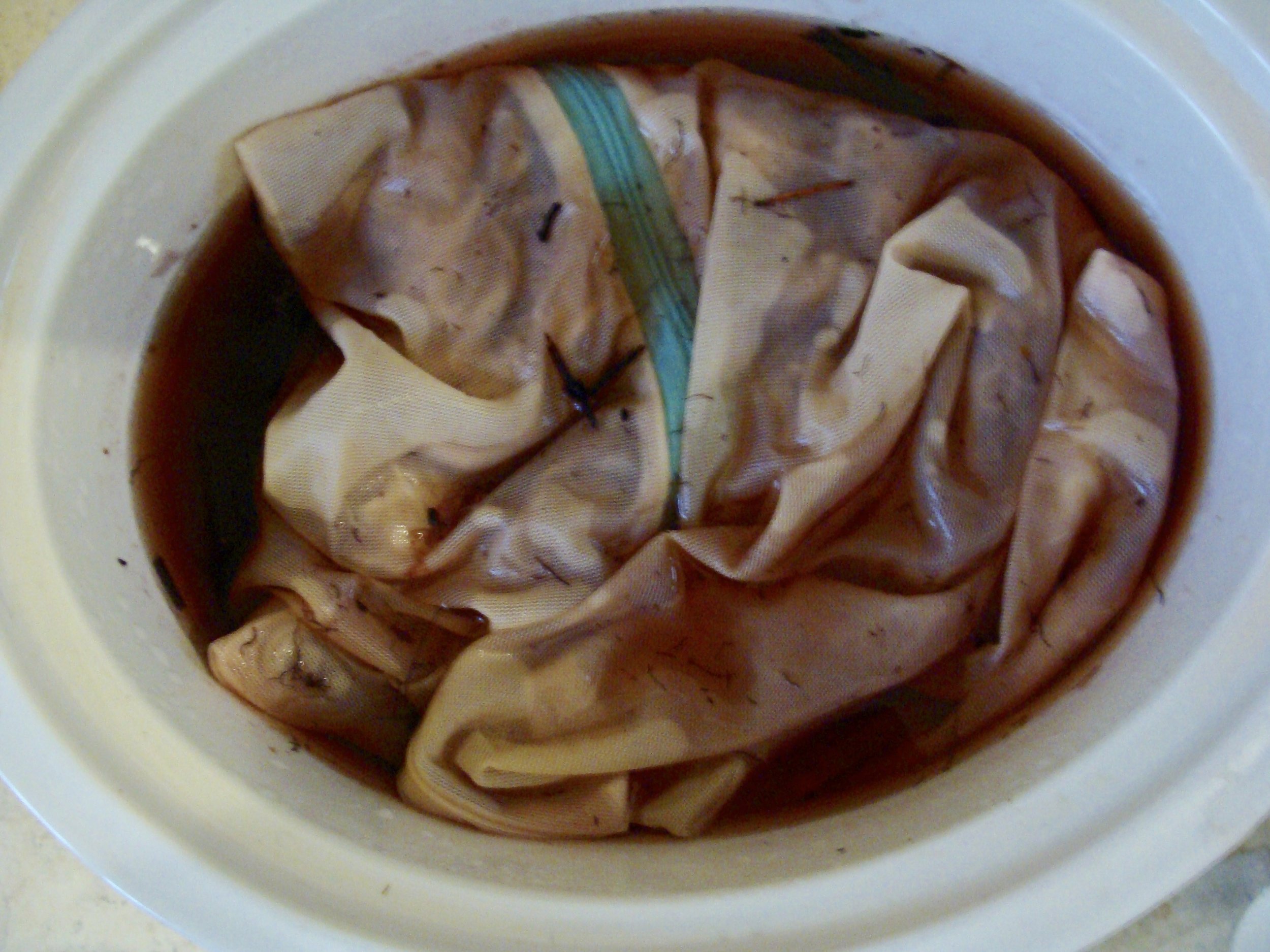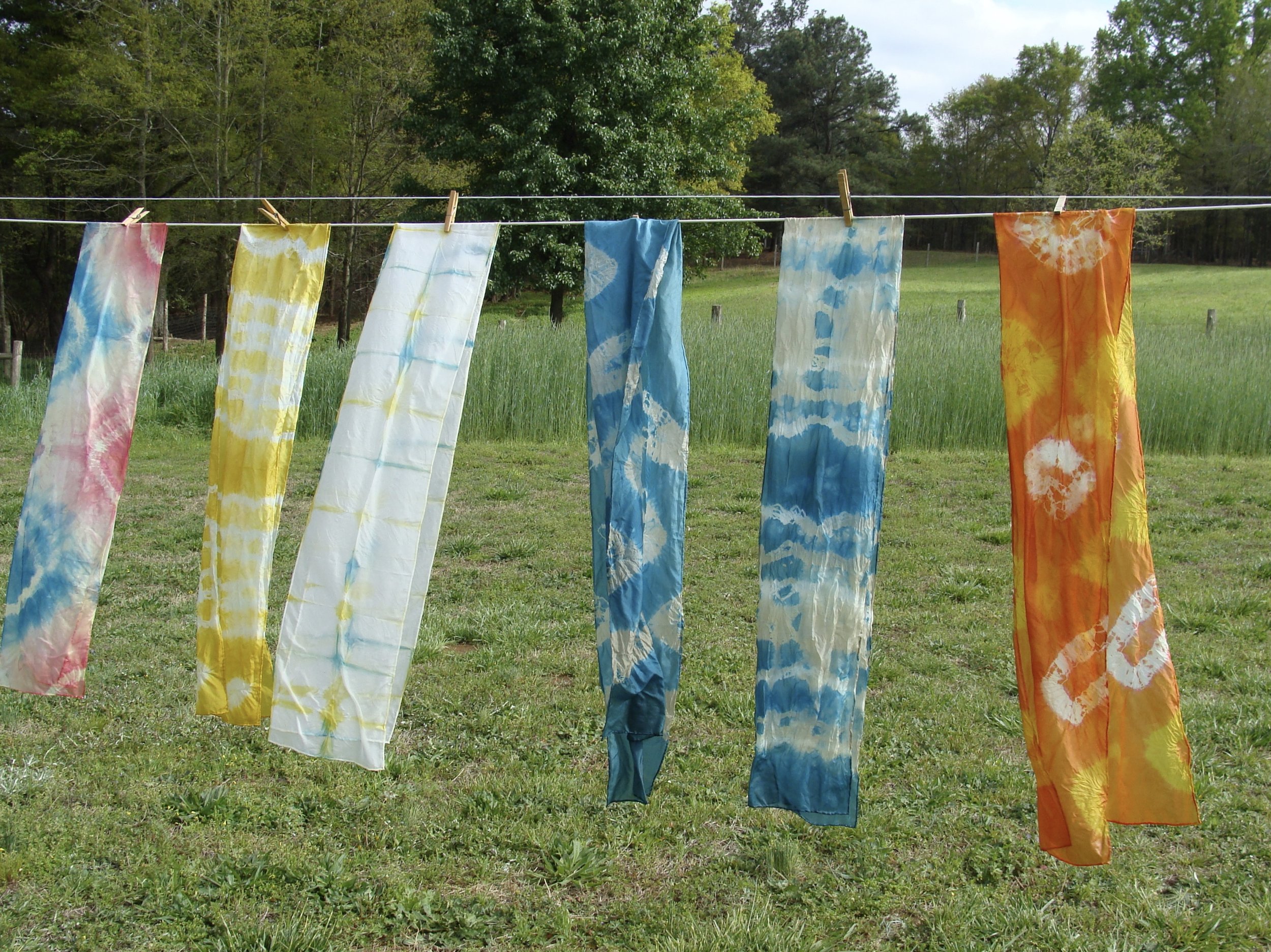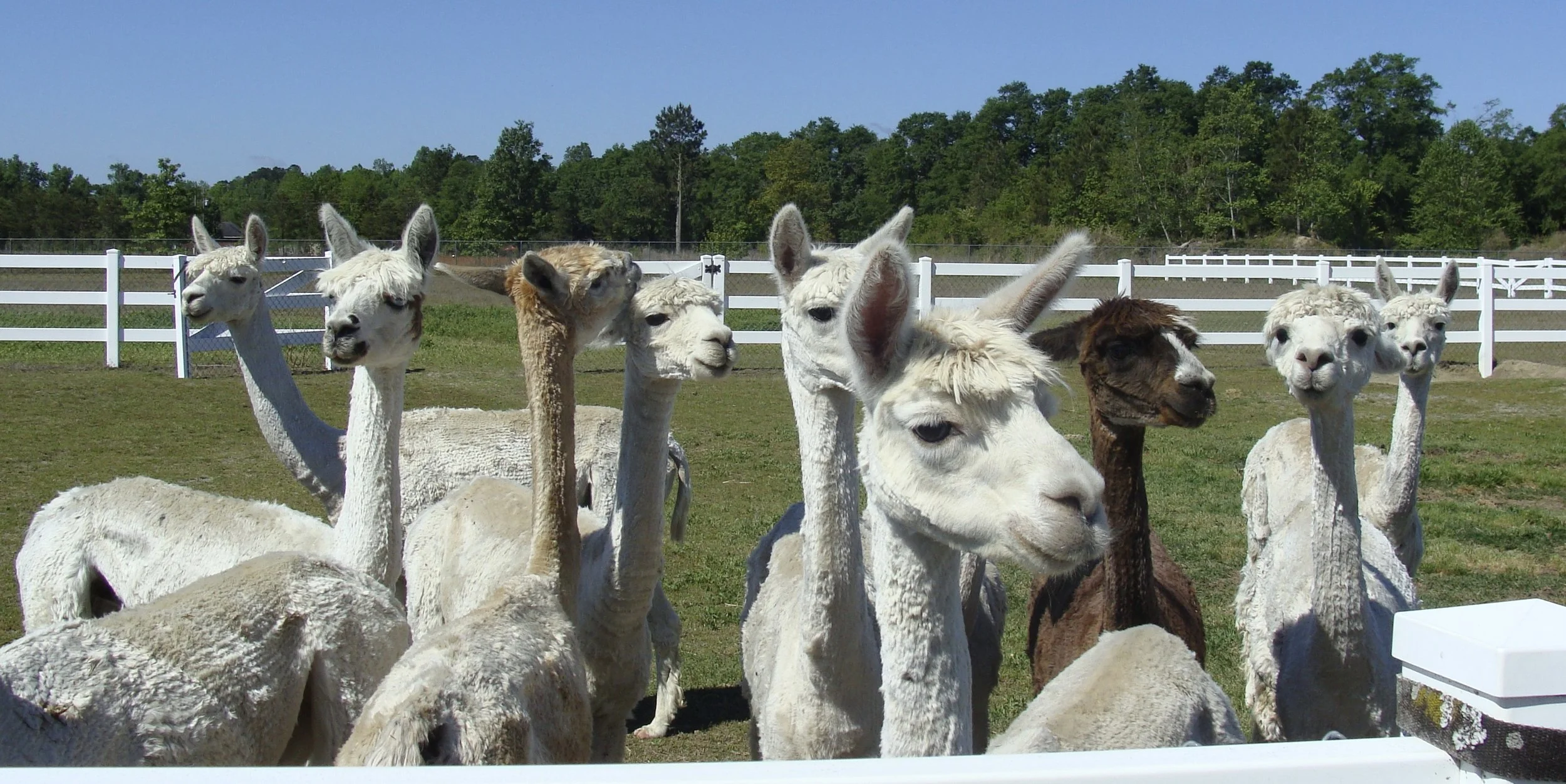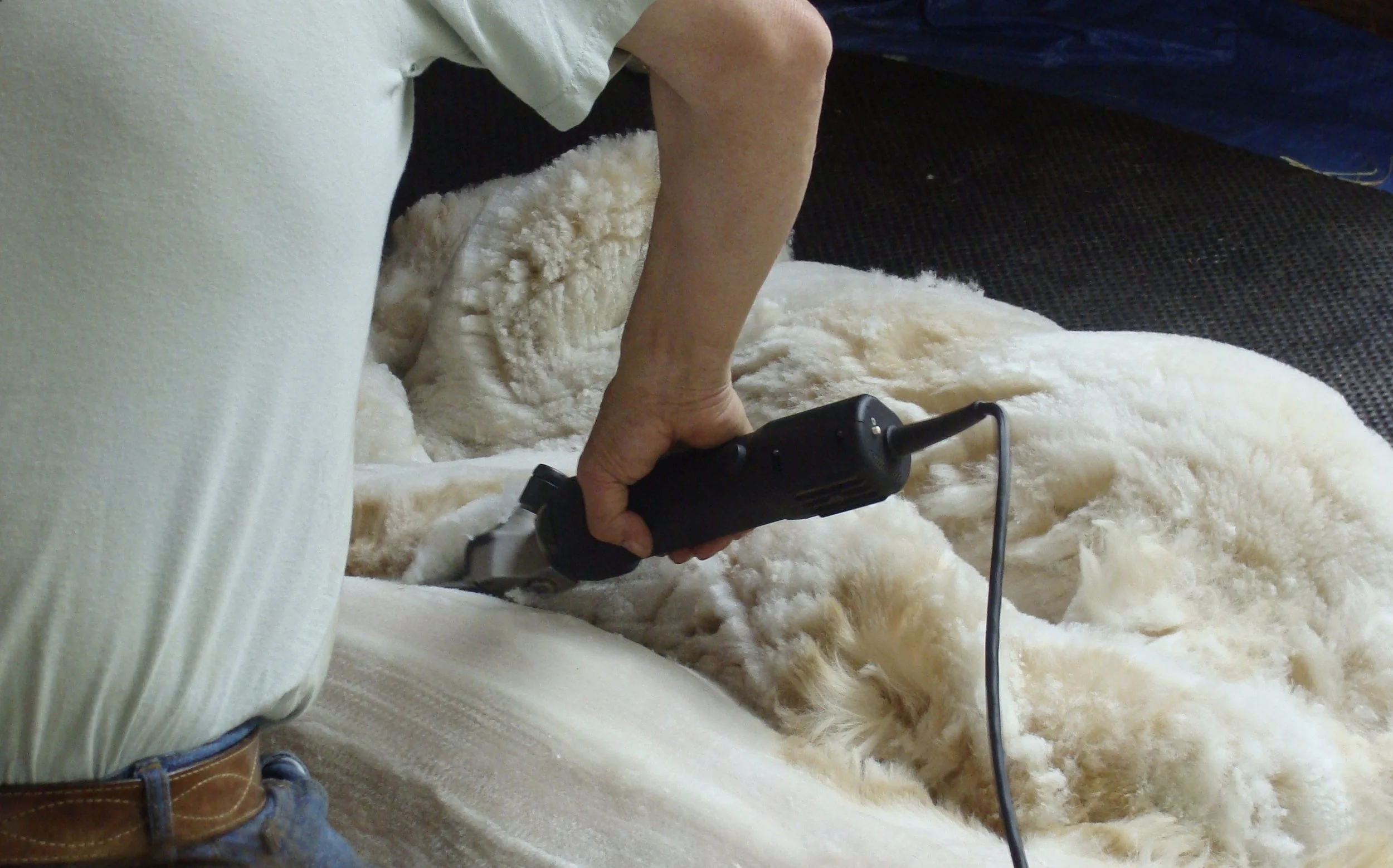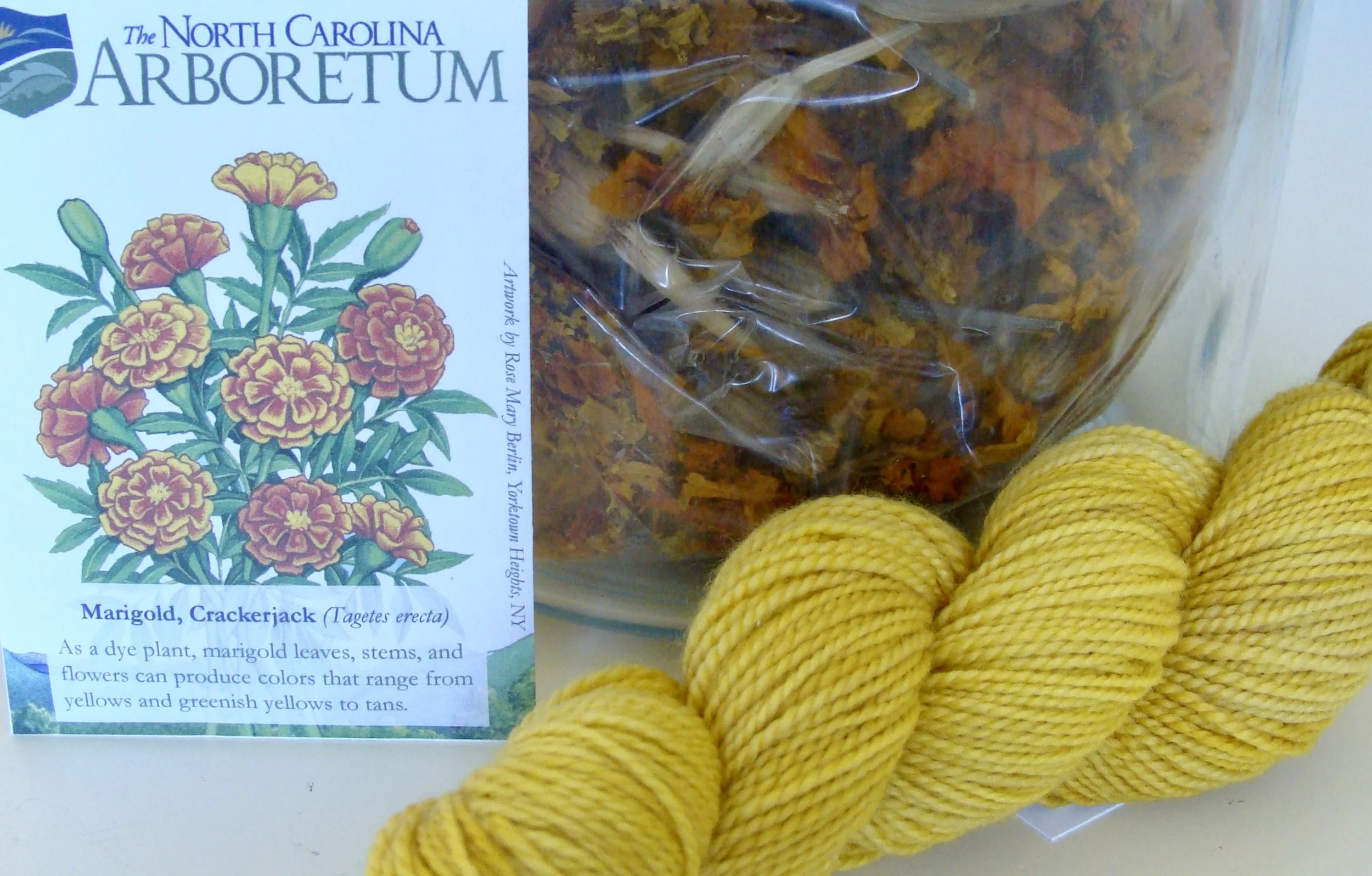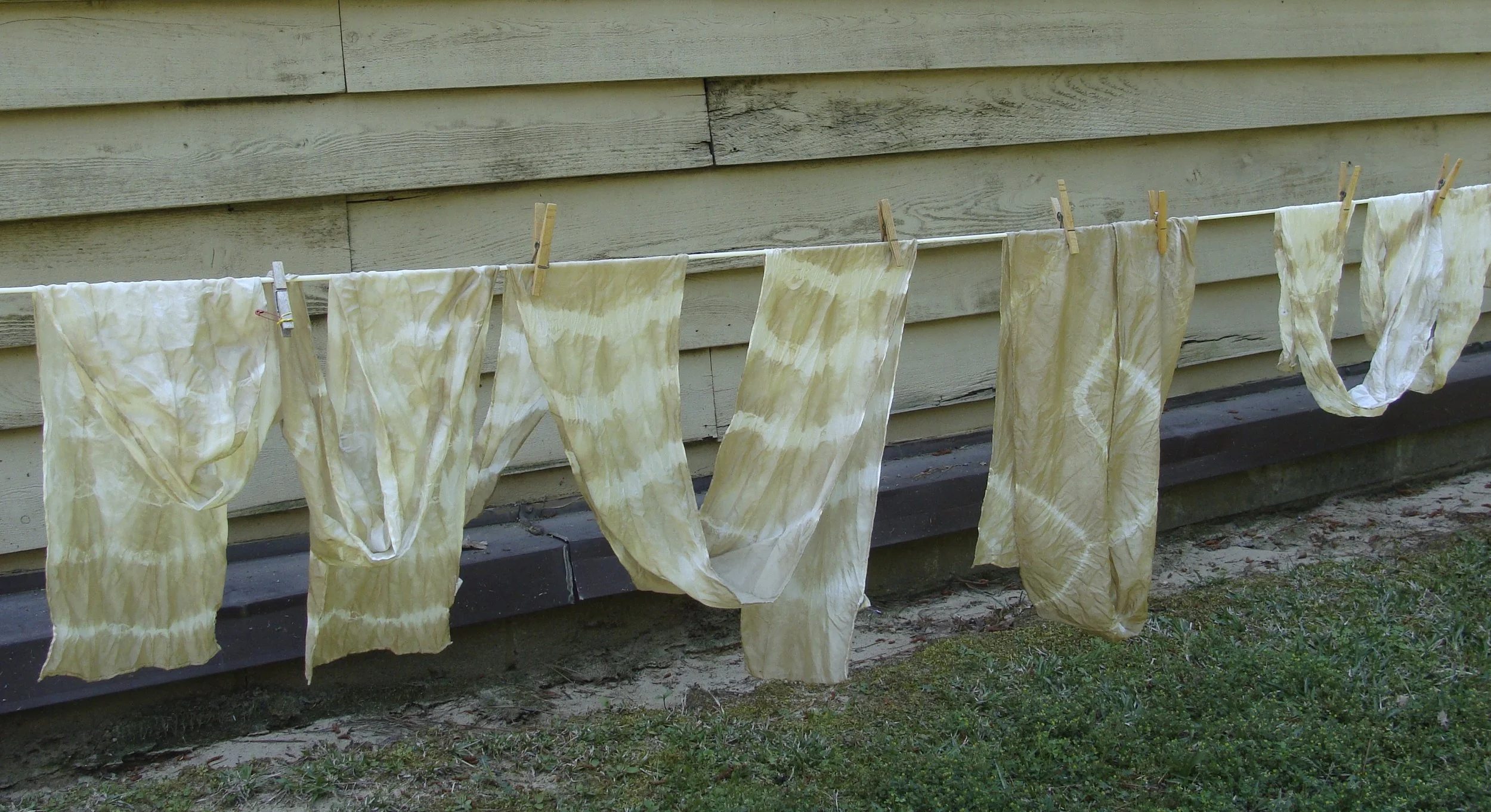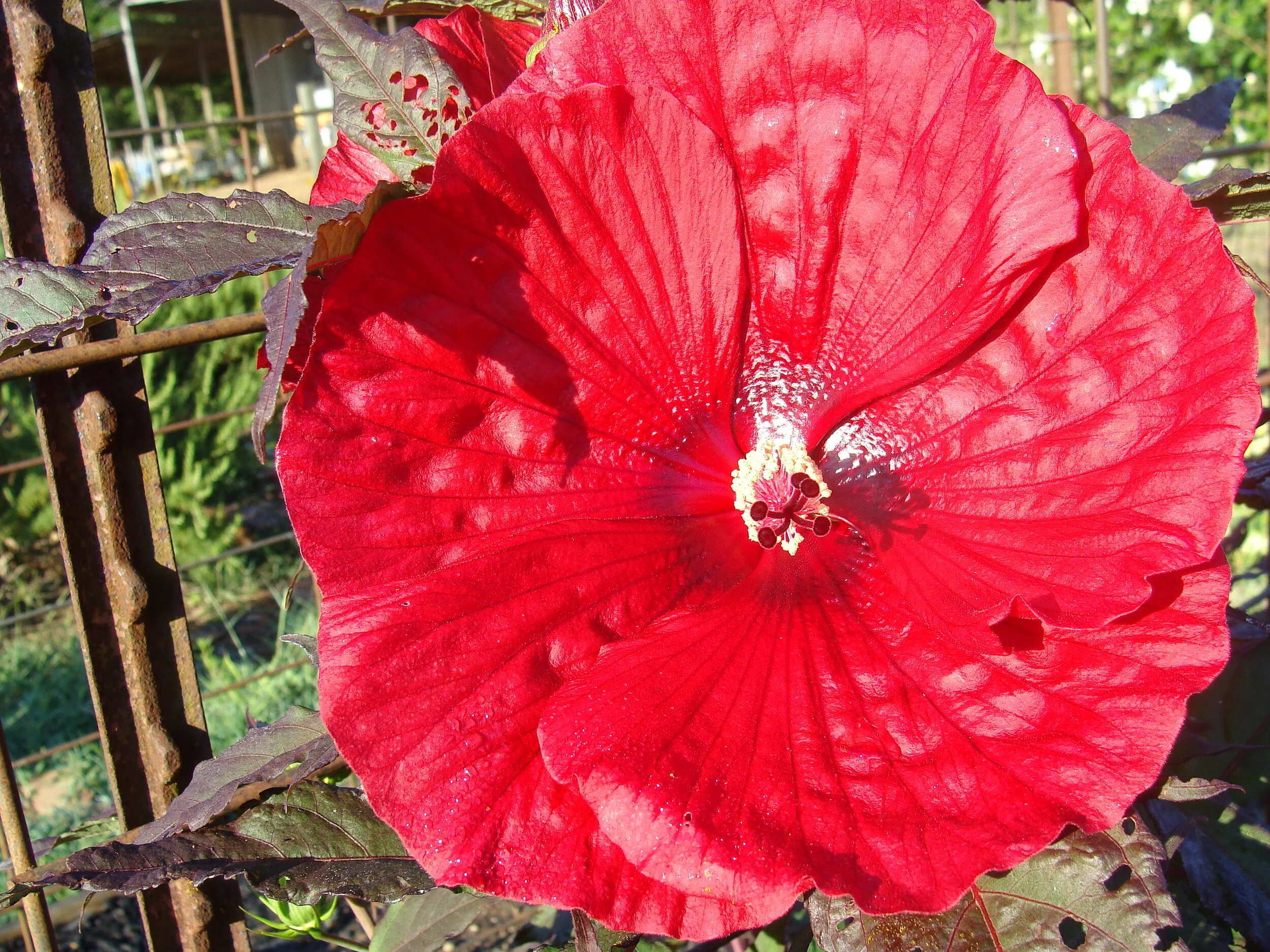Let's Dye . . . Madder
I needed to dye some alpaca for the neck warmer I will be knitting as part of 'Alpaca-The Mini Series'. Since I haven't done a 'Let's Dye . . .' post in awhile, I thought this would be a great project to try out madder from my dye garden.
Madder [Rubia tinctoria] is a rather weedy and uninteresting looking perennial that I definitely wouldn't classify as an ornamental. However, it is a staple of natural dye gardeners for millennia. Rita Buchanan provides this visual description in her book 'A Dyer's Garden':
"Its top growth is scratchy and sprawling, with whorls of plain green leaves and clusters of pale little flowers, but underground its tangle of pencil-thick woody roots are bright red inside."
I purchased several small plants from an online herb nursery; but madder can also be grown from seed. It is a perennial to Zone 4 and can be propagated by division. In my dye garden, the plant reaches about a foot and a half high and sprawls across and over a raised bed. One of my reasons for planting in a raised bed was to confine the roots and allow an easier harvest.
I can attest madder requires virtually no care once established. Last year was it's second season in the ground, and despite our hot South Carolina summers, it did not require any supplemental watering.
The colorant is contained in the roots which can be harvested when the plant is dormant. I dug just a little of the orange-red roots last Fall. I brushed off the soil and air dried for later use. The roots can also be used immediately.
Madder is an interesting dye material because it contains several different colorants. Alizarin is what gives the red, but madder also contains yellows, oranges, and brown. Madder dyes warm orangey reds, as opposed to cochineal's cooler, clearer reds. The range of color is described as shades of coral, salmon, dark orange, and brick red. Initially the shades obtained are dominated by red, however subsequent dye baths are more orange dominate.
I started with 2.5 ounces of washed alpaca fiber; as you can see it is slightly off-white with a subtle beige/grey tint. I premordanted the fiber by placing it in a mesh bag and soaked it overnight in cool water with 1/2 tablespoon of Alum added.
To prepare the dye bath, I placed 1/2 ounce of chopped madder in cool water and soaked it overnight in the crock of a crockpot (I use only for dyeing). The next day I turned the crock pot on high for about 1 1/2 hours; the temperature at that time was about 95 degrees. I turned off the heat, covered, and soaked the madder root another 24 hours.
In my research, there are dozens of dye recipes and methods; some using less soaking time, but higher heat. I wanted to try a crock pot so I adapted to make my own version. I also chose a low heat method since I was dyeing raw fleece and I did not want to risk felting it.
Note - 1/2 ounce of madder root to 2 ounces of fiber is a 25% weight of goods dye solution. This is fairly weak; whereas more typically the solution should be a 100 or 200% dye solution. The reality is that is all the madder root I had on hand. I knew this going into the process and therefore expected a light pinkish color rather than a deeper red.
After rinsing the premordanted alpaca fiber in cool water, I placed it in the dye bath. I did not remove the madder root because the fiber was protected by the mesh bag from any pieces of root sticking to it. The fiber remained in the dye bath for roughly 24 hours. I heated it twice during that period to about 104 degrees; once for 3 hours at the beginning of the soak and then for about 2 hours near the end of the 24 hour period.
This is what the dye bath looked like at the end of the 24 hour soak.
I rinsed the dyed fiber (still in the mesh bag) in cool water.
Then I air dried after spreading it on a bit of 1/2 inch hardware cloth that I use for that purpose.
And there you have it! The color is a light salmon pink. I'm pleased with it!
I tried to dye two silk scarves with a second extraction of the dye bath, but there was simply not enough madder remaining to give much more than a whiff of color . . .
. . . so I pulled out cochineal, marigold, and saxon blue and did a little bright color dyeing!
More Reading
- The (Slightly) Shady History of Red & White Quilts - this is a fun read about the story of Turkey red fabric, the bright colorfast cotton coveted by Europeans in the eighteenth century.
- Indigo, Madder & Marigold by Trudy van Stralen - an all around excellent book for natural dyeing.
- A Dyer's Garden by Rita Buchanan - a wonderful resource for growing and using natural dyes.
- Wild Color by Jenny Dean - my 'go to' reference for natural dyeing.


